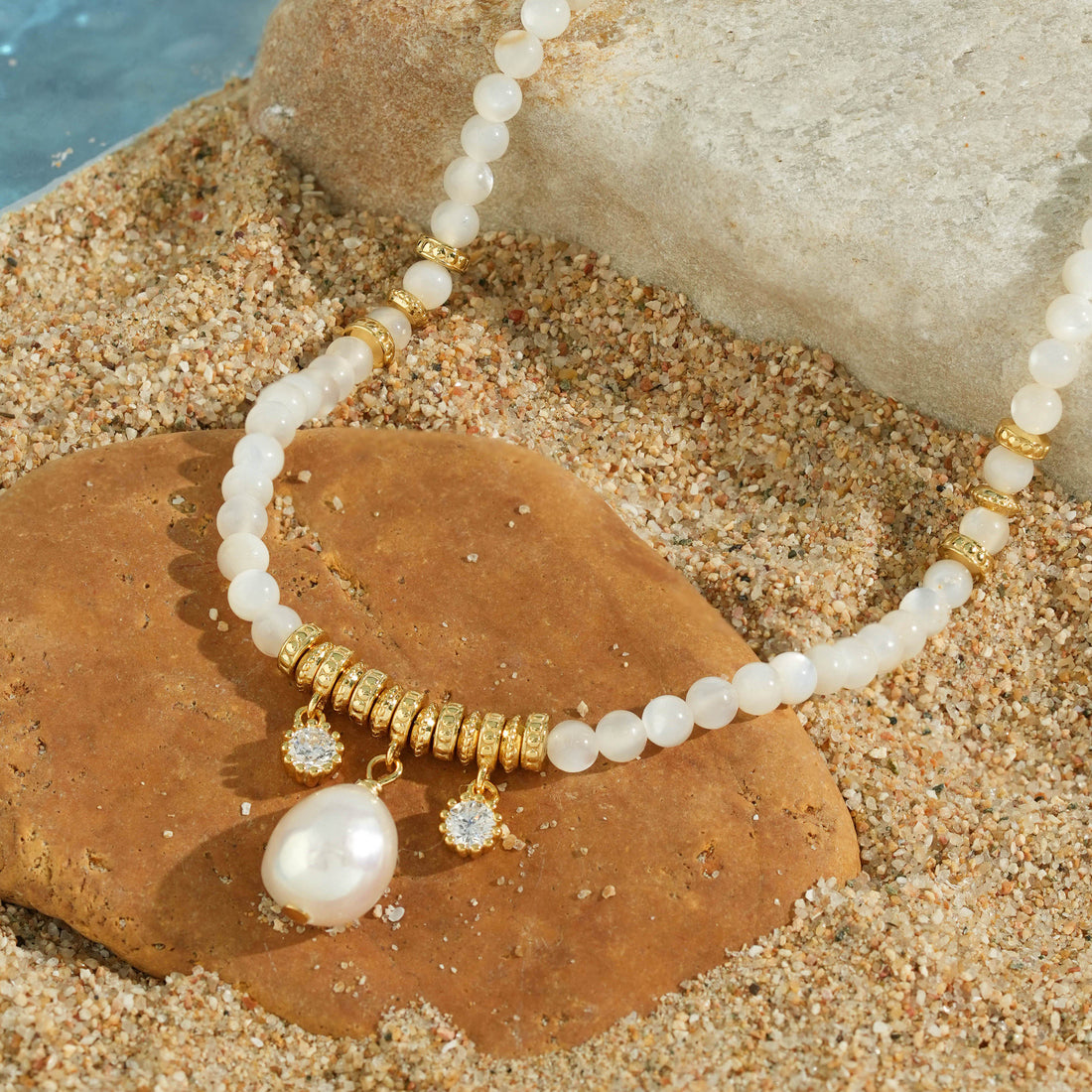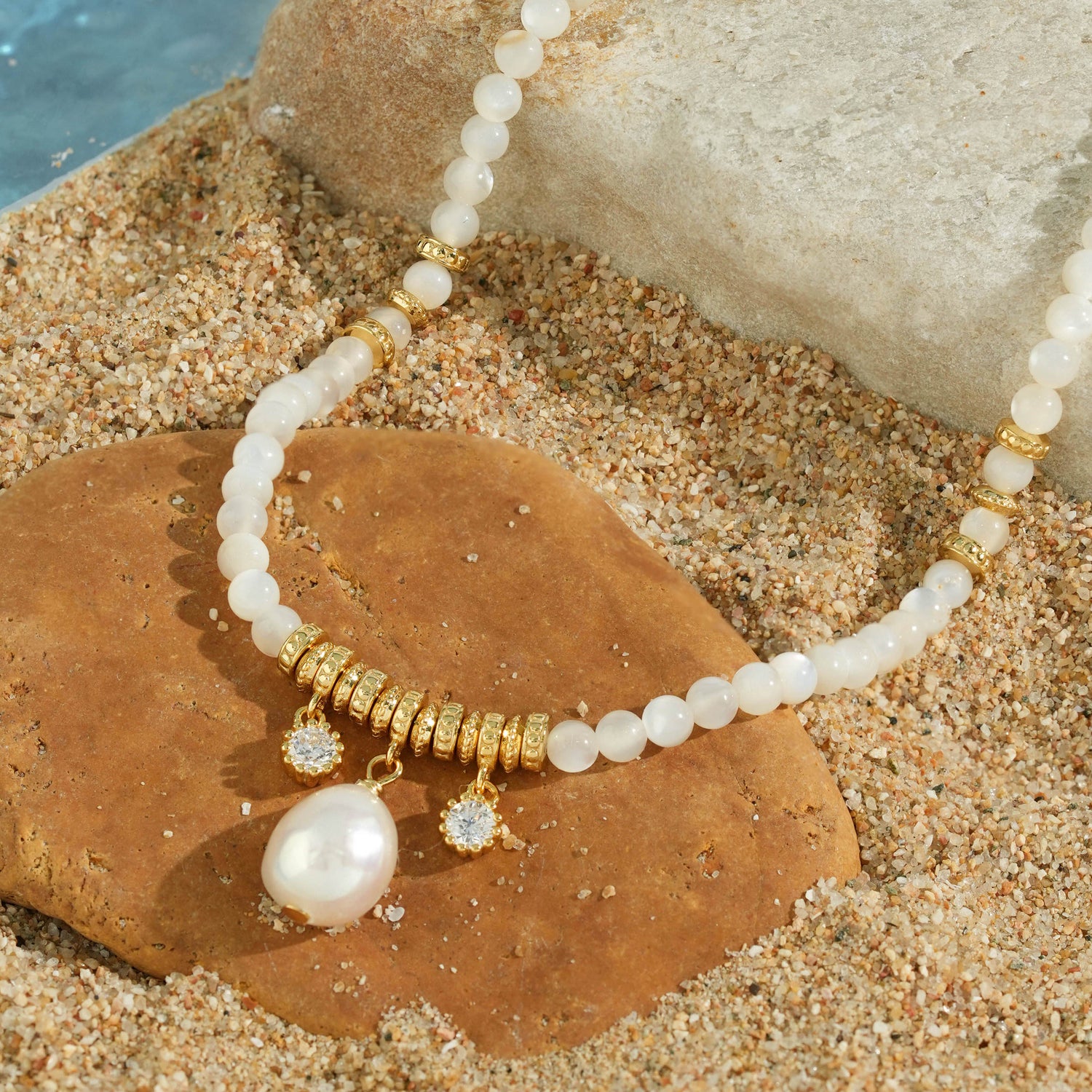S925 gold-plated jewelry (often referred to as gold vermeil when meeting certain standards) combines the elegance of gold with the affordability of sterling silver. However, not all gold-plated pieces are created equal. In this buyer’s guide, we detail how to identify high-quality S925 gold-plated jewelry so you invest in durable, beautiful pieces that stand the test of time. We cover plating standards, hallmark recognition, craftsmanship indicators.
Understand Gold Vermeil vs. Standard Gold-Plated Jewelry
1.What Is Gold Vermeil?
- Definition & Standards: True gold vermeil must consist of a sterling silver base (92.5% silver) plated with gold of at least 10K purity and have a minimum plating thickness of 2.5 microns (0.0025 mm)
- Why It Matters: A thicker gold layer ensures longer-lasting color and wear resistance compared to thinner standard plating (often 0.05–1 micron)
2.Standard Gold-Plated Jewelry
- Typical Thickness: Many gold-plated items use a thin layer (<1 micron), sometimes called “gold flash,” which can wear off quickly.
- Terminology Caution: Pieces labeled simply “gold plated” without verified thickness should be treated as fashion jewelry with shorter lifespan.
Key Indicators of High-Quality S925 Gold-Plated Jewelry
1.Check for Hallmarks and Markings
- S925 Stamp: Ensure the base metal is marked “S925” or “925” indicating genuine sterling silver. A missing or unclear stamping may indicate a different base metal or plating over lower-quality alloys.
- Gold Purity Mark: For vermeil, look for markings like “10K GP” or brand certification that gold used is at least 10K. Some pieces may include “vermeil” in product description or stamped marking.
2.Assess Plating Thickness
- Manufacturer Details: Reputable sellers often specify plating thickness. For vermeil: ≥2.5 microns; for general gold plating: check if listed (e.g., 1–3 microns for certain pieces).
- Price as Indicator: Genuine vermeil with thick plating usually costs more than ultra-thin plated items, reflecting gold content.
- Ask for Certification: If uncertain, request plating thickness certification or inquire about plating process (electroplating vs. PVD).
3.Evaluate Craftsmanship and Finish
- Uniform Color and Luster: High-quality plating appears even, with no patchy or dull spots. Check edges and inside of jewelry (e.g., inside rings or behind pendants) for consistent finish.
- Smooth Edges: Well-crafted S925 gold-plated pieces have smooth, polished edges without roughness or visible solder marks.
- Stone Settings & Attachments: For pieces with pearls, natural stones, or cubic zirconia, inspect settings: prongs should be secure, evenly spaced, and not overly bulky. Poor settings can lead to stone loss or uneven wear exposing the silver base.
- Weight & Feel: While S925 base is lighter than solid gold, a well-made piece still feels substantial. Extremely light or flimsy jewelry may indicate very thin plating over low-quality base.
4.Gold Purity and Alloy Considerations
- Gold Karat: Gold vermeil uses at least 10K gold for plating, sometimes 14K or 18K. Higher karat can impart richer tone but may be softer; balance between color preference and durability.
- Allergic Considerations: Sterling silver base is hypoallergenic; ensure plating process avoids nickel or other irritants. High-quality vermeil uses pure gold plating over silver, ideal for sensitive skin.
5.Plating Method & Technology
- Electroplating vs. PVD/CVD: Traditional electroplating is common for vermeil; advanced PVD (physical vapor deposition) can yield thinner but harder coatings on some metals—less common on silver. Confirm method with seller if longevity is critical.

- Multiple Layers & Protective Coatings: Some manufacturers add a final protective layer (e.g., clear lacquer or anti-tarnish coating) to extend life; inquire if applied.
Testing and Verification Methods
1.Visual Inspection
- Magnification: Use a jeweler’s loupe or magnifying glass to inspect plating edges, hallmark clarity, and stone settings.
- Color Consistency: Look under different lighting (natural vs. indoor) to confirm uniform gold tone.
2.Tarnish & Wear Tests
- Simulated Wear: Lightly rub an inconspicuous area with a soft cloth after contacting water or sweat residue to see if plating resists immediate fading.
- Check for Base Metal Exposure: After some wear, observe if silver shows through any worn areas; high-quality vermeil should wear gracefully.
3.Professional Assessment
- Jeweler’s Evaluation: For high-value purchases, consider professional appraisal or plating thickness measurement (XRF testing) at a reputable jeweler.
- Certification Requests: Ask sellers for plating specifications or third-party test reports if available.
Purchasing Channels and Brand Considerations
1.Reputable Sellers & Transparency
- Detailed Product Descriptions: Quality brands list metal composition, gold karat, plating thickness, and care instructions. Avoid vague listings lacking specifics.
- Customer Reviews & Photos: Look for real-life images and reviews commenting on longevity and wear patterns.
2.Price vs. Value
- Reasonable Pricing: Genuine vermeil typically costs more than thin-plated pieces; extremely low-priced S925 gold-plated items may indicate minimal plating. Balance budget with expected longevity.
- Warranty & Repair Policies: Brands offering warranties or free/discounted replating signal confidence in their craftsmanship.
Choosing high-quality S925 gold-plated jewelry involves verifying hallmarks, assessing plating thickness (ideally ≥2.5 microns for vermeil), inspecting craftsmanship, and understanding care requirements. By following this guide, buyers can make informed purchases that offer lasting beauty and value.




